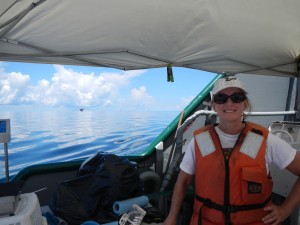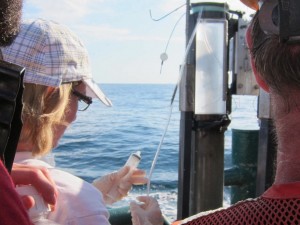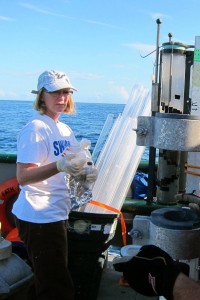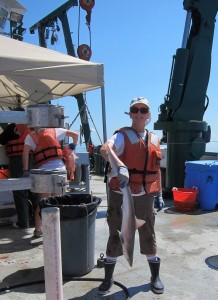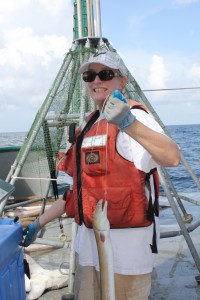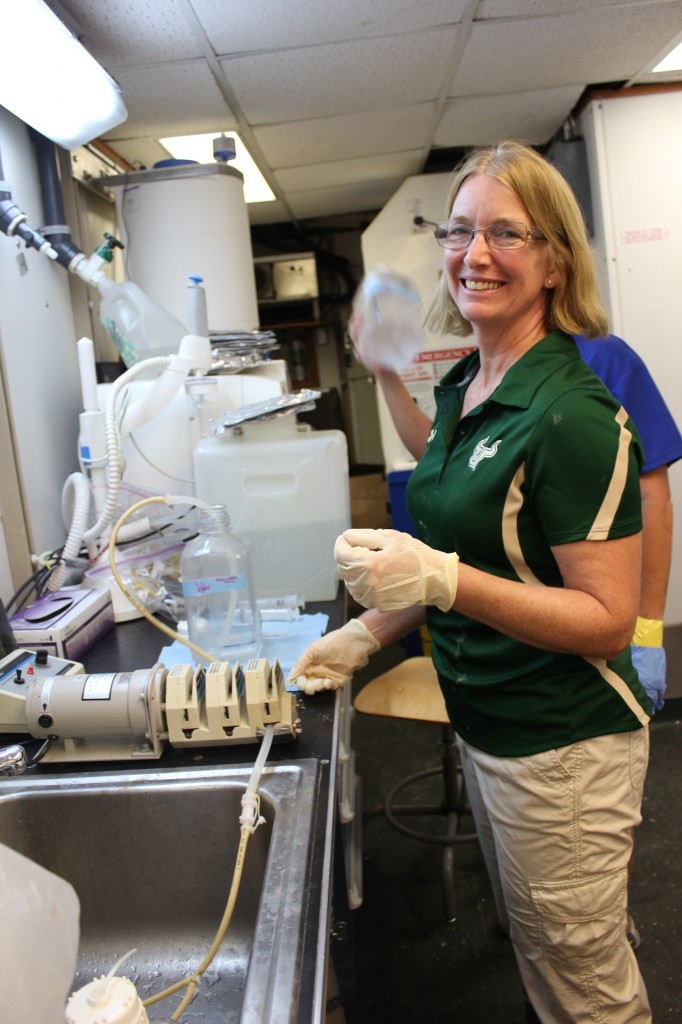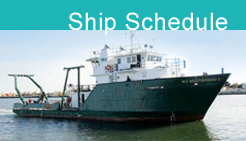Deep Sea Fish and Sediment Surveys in the Gulf
Why is the Dean of Marine Science on board the ship?
You might wonder why a Dean would bother to go out on a cruise. As Dean, my role is more about “managing” science rather than “doing” science. It is difficult to find the time to participate in fieldwork. One of my faculty, Robert Weisberg, likes to say that “you can’t manage a system you don’t understand.” That applies equally to running an organization or managing an ecosystem like the Gulf of Mexico. With respect to managing the college, I can’t make wise decisions unless I have a firm working knowledge of what the students, staff, and faculty are experiencing. Though managed by the Florida Institute of Oceanography, cruises on our ships the R/V Weatherbird II and R/V Bellows are an important part of life for everyone at the College of Marine Science. It is useful for me to experience life aboard the vessels. With respect to the Gulf of Mexico, I was an active participant in the effort to get our C-IMAGE center funded, so it makes sense for me to participate in this cruise, as I certainly have “skin in the game”.
Being out here reminds me why I fell in love with this line of work in the first place – a community of people working together to solve important scientific questions that they are passionate about. You get to focus on what you love, without the distractions of day-to-day life. And it’s really nice to have someone do all the shopping and cooking for you!
What has been the most interesting part of the cruise for you?
Usually when I go to sea, I am either dredging for volcanic rocks or using a remotely operated vehicle (ROV) to collect rocks. When rocks come on deck, they don’t wriggle, thrash, squirm or bite. In particular, the sharks and king snake eels have been quite exciting! At least I’m not doing the dissections! That would be too much for any self-respecting geologist to do.
How did you get started in oceanography?
I didn’t plan to be an oceanographer, but I was prepared because I was taking basic science and math as an undergraduate, and I was willing to jump on an opportunity that became available. It helps to be at the right place at the right time, but you have to be able to recognize an opportunity and be willing to take it.
I first went out to sea when I was an undergraduate at Stanford University. It wasn’t a class or an organized undergraduate research experience. Instead, I was given an opportunity to volunteer on a research cruise to the central Pacific at the exact moment I had decided to take a break from school. I had no job, no place to live, and no clear plan for my major and someone offered me a two-month all-expenses paid trip (but no salary) to Hawaii and Panama. It didn’t take me long to say yes. During that cruise, I learned how to be a scientific navigator using transponder navigation. This was before the days of GPS. The excitement of “doing” science as part of a team, instead of memorizing information from a textbook, inspired me to change my major to geology once I returned to school in the fall. As I finished my bachelor’s degree, I went on to work at the US Geological Survey as a scientific navigator on their ship the R/V S.P. Lee. I was aboard the ship when hydrothermal vents were discovered on the Juan de Fuca Ridge in the NE Pacific. That was a career-defining event for me and I stayed on for a master’s degree in geology and studied the volcanic rocks erupted on the seafloor along the Juan de Fuca Ridge.
If you study volcanoes, what can you possibly contribute to the study of the Deepwater Horizon disaster?
The beauty of oceanography is its interdisciplinary nature. My specialty is the study of gases in magmas and volcanic rocks. Volcanic eruptions are driven by the expansion of gas that exsolves from magma as the pressure drops during ascent from depth to the surface. This is similar to what causes champagne to spew from the bottle when the cork is popped. It turns out that the basic physics of the deep well blowouts are very similar to those for explosive volcanic eruptions or hydrothermal vent plumes. They all involve rapid rise of a buoyant multi-phase plume that interacts with the medium through which it travels (seawater or atmosphere) and separates into different layers. I like to describe the blowout as an eruption of petroleum and gas on the seafloor. Some of the best estimates of the volume of oil spilled into the Gulf come from scientists at Woods Hole using technology developed to study hydrothermal vents at mid-ocean ridges. Our C-IMAGE center combines research on the physics of an evolving oil-gas-dispersant plume into different parts (what floats, what dissolves into seawater, what gets suspended, and what sinks to the bottom), how these parts evolve with time (physical and biological degradation), and how each part impacts the surface, shallow, and deep ecosystems.
| Print article | This entry was posted by greely on August 18, 2012 at 6:03 am, and is filed under Oceanic Updates. Follow any responses to this post through RSS 2.0. You can leave a response or trackback from your own site. |
